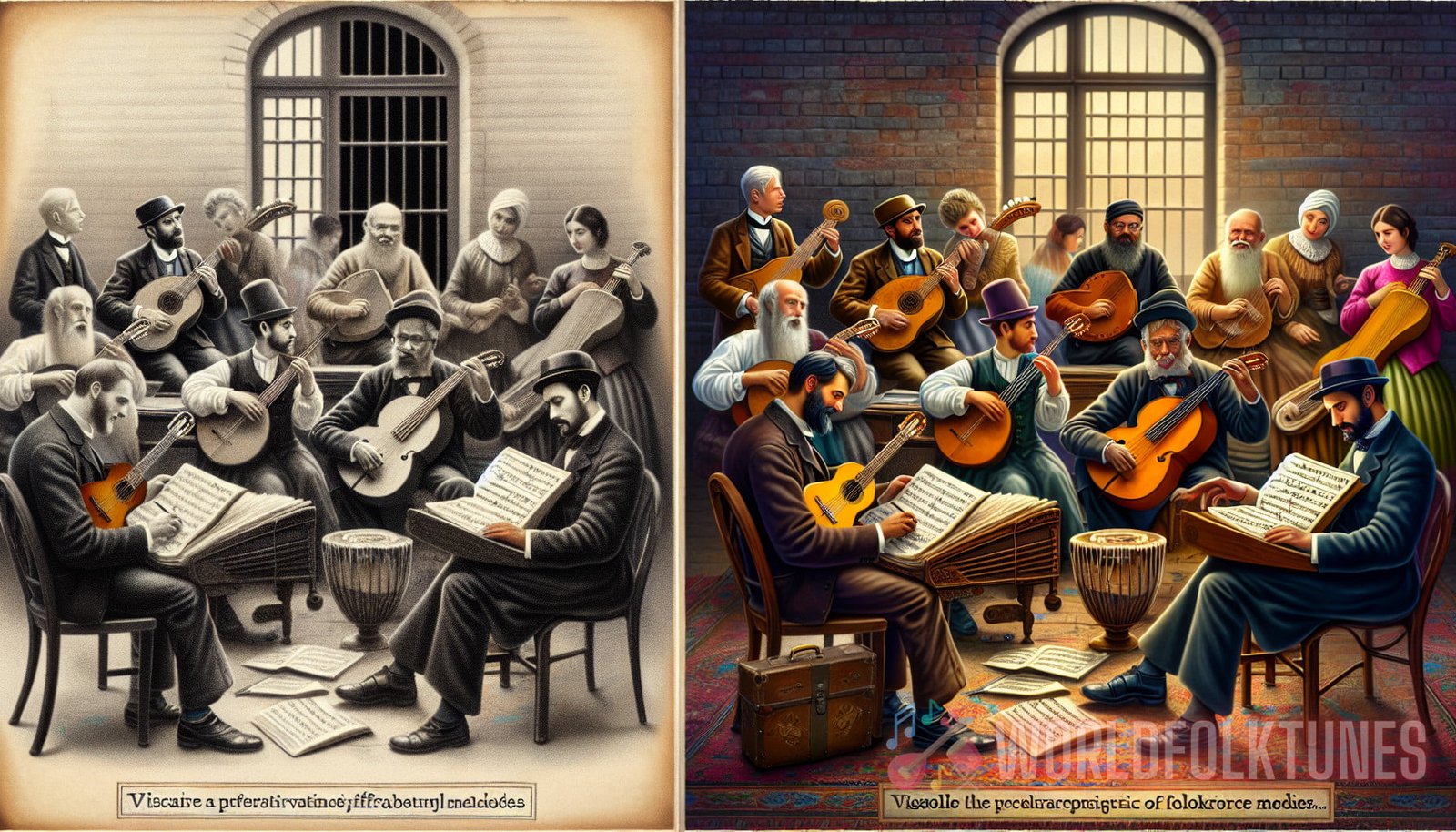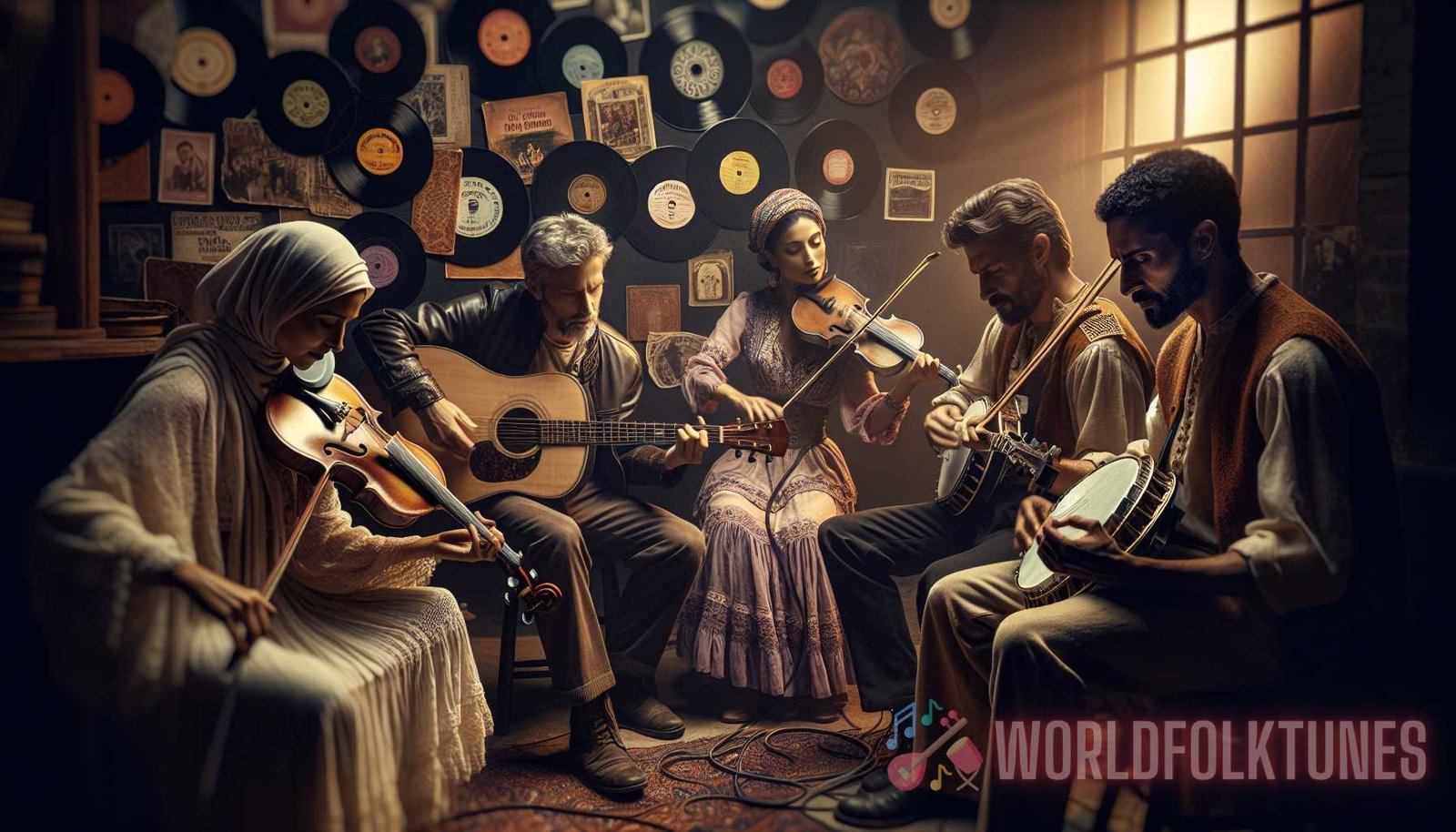Introduction
Unveiling the Enchanting Melodies: A Timeless Exploration of Folklore’s Musical Evolution
Folklore melodies have long captivated audiences with their enchanting and evocative tunes. These timeless treasures, passed down through generations, have evolved and adapted to reflect the changing landscapes of the societies that birthed them. From the haunting ballads of the British Isles to the rhythmic beats of West African folk music, each region’s folklore carries a unique musical legacy that sheds light on the diverse cultures and histories of the world.In this article, we will embark on a journey through the captivating realm of folklore melodies, delving deep into their origins, evolution, and lasting impact on global music. From traditional folk songs to contemporary interpretations, we will explore the rich tapestry of melodies that have shaped the world of music as we know it today.
Unveiling the Enchanting Melodies: A Timeless Exploration of Folklore’s Musical EvolutionLet us begin our exploration of folklore melodies with a closer look at their origins and the cultural significance they hold. From ancient ballads to bustling jig tunes, these melodies offer a window into the past, providing a glimpse of the stories and traditions that have been woven into the fabric of societies around the world.
The Origins and Cultural Significance of Folklore Melodies
Folklore melodies have their roots in the oral tradition, where stories, songs, and legends were handed down through generations by word of mouth. These melodies served as a means of preserving cultural heritage, passing on important historical events, and reflecting social and political realities.
- The origins of many folklore melodies can be traced back to ancient times, with evidence of traditional musical instruments and songs found in archaeological excavations.
- Early folklore melodies often revolved around themes of love, nature, and spirituality, reflecting the close connection between human experiences and the natural world.
- In many cultures, folklore melodies were performed during communal gatherings and celebrations, serving as a way for communities to come together and express their shared identity.
- These melodies played a significant role in shaping cultural norms and values, providing a framework for ethical behavior and reinforcing social cohesion within communities.
As we delve into the diverse world of folklore melodies, it becomes evident that each region’s musical traditions have their unique characteristics and styles. Let us now explore some of the prominent folklore genres and their musical features.
1. Celtic Folklore Melodies: Echoes of the Ancient Past
Celtic folklore melodies transport us to the misty landscapes of Ireland, Scotland, Wales, and other Celtic lands. These haunting tunes resonate with the mysticism and beauty of the natural world, weaving tales of epic heroes, ancient mythical creatures, and unrequited love.
An article available at https://worldfolktunes.space/reviews/folk-analysis/.From the mournful wails of the uilleann pipes to the intricate fingerpicking of the Celtic harp, Celtic folklore melodies are characterized by their unique instrumentation and modal scales. The ancient Celtic tradition of storytelling, known as “seanchaí,” is also deeply intertwined with their folklore melodies, adding a narrative layer to these enchanting tunes.
An article available at https://worldfolktunes.space/reviews/folk-echoes-resonate-reviews-of-latest-albums-embracing-traditional-roots/.The jigs, reels, and ballads of Celtic folklore have not only influenced traditional Irish and Scottish music but have also made their mark on contemporary genres such as folk-rock and Celtic fusion. The timeless allure of Celtic folklore melodies continues to captivate audiences worldwide, bridging the gap between ancient traditions and modern interpretations.
2. West African Folklore Melodies: Rhythmic Beats and Cultural Resonance
West African folklore melodies carry the vibrant rhythms and energetic beats that are characteristic of the region’s rich musical heritage. From the call and response of African work songs to the intricate polyrhythms of the djembe drum, these melodies reflect the deep-rooted connection between music and community in West African cultures.
The diverse ethnic groups of West Africa each contribute their unique musical traditions to the tapestry of folklore melodies. Griot storytelling, a centuries-old tradition of oral storytelling, plays a central role in preserving and passing down these melodies from one generation to another.
The influence of West African folklore melodies can be heard in various music genres around the world, including blues, jazz, and Afrobeat. The rhythmic complexity and soulful melodies of West African music continue to inspire musicians and shape the global music landscape.
3. American Folklore Melodies: Songs That Tell the Story of a Nation
American folklore melodies have their roots in the diverse cultures that make up the melting pot of the United States. From the Appalachian ballads of the East to the blues and gospel of the Deep South, these melodies reflect the struggles, triumphs, and aspirations of a nation.
The folk music revival of the 20th century brought American folklore melodies into the spotlight, with artists like Bob Dylan, Joan Baez, and Pete Seeger popularizing traditional songs and breathing new life into the genre. These melodies served as a voice for marginalized communities and became an integral part of the civil rights movement.
The enduring legacy of American folklore melodies can be heard in contemporary genres such as country, bluegrass, and Americana. These melodies continue to evolve and resonate with audiences, keeping alive the spirit of storytelling and social commentary that is deeply embedded in the fabric of American culture.
The Evolution of Folklore Melodies: From Tradition to Innovation
Like any form of music, folklore melodies have evolved and adapted over time, influenced by changing social, cultural, and technological contexts. While the core essence of these melodies remains intact, they have embraced innovation and experimentation, keeping them relevant in the modern world.
1. Folk Revivals: Preserving and Reimagining Tradition

The 19th and 20th centuries witnessed a resurgence of interest in traditional folklore melodies, known as folk revivals. Scholars, collectors, and musicians sought to preserve and document these melodies, recognizing their cultural and historical value.
Folk revivals played a crucial role in reintroducing folklore melodies into the public consciousness, both in their traditional forms and reimagined adaptations. Artists like the Carter Family, Lead Belly, and Woody Guthrie became ambassadors of American folklore melodies, bringing them to a wider audience and influencing subsequent generations.
In Europe, the British folk revival of the 1960s and ’70s saw the emergence of artists like Fairport Convention, Steeleye Span, and Pentangle, who blended traditional folklore melodies with contemporary instrumentation and arrangements. These reinterpretations breathed new life into the genre, capturing the imagination of a new generation.
2. Global Fusion: Crossing Boundaries and Blurring Genres
As the world became more interconnected, folklore melodies began to fuse with other music genres, creating innovative and eclectic sounds. Artists and bands like Afro Celt Sound System, Tinariwen, and Yo-Yo Ma’s Silk Road Ensemble embraced the idea of cross-cultural collaboration, blending traditional folklore melodies with elements of jazz, rock, electronic music, and more.
Global fusion not only expanded the sonic palette of folklore melodies but also fostered cultural exchange and understanding. These collaborations highlighted the shared musical threads that connect different cultures and celebrated the diversity of our global heritage.
3. Contemporary Interpretations: Folklore Melodies in the Digital Age
In the digital age, folklore melodies have found a new platform for dissemination and reinterpretation. Online platforms, streaming services, and social media have become powerful tools for connecting artists, enthusiasts, and audiences from around the world.
Contemporary musicians are exploring new ways to incorporate folklore melodies into their compositions, experimenting with electronic production techniques, and creating genre hybrids that defy traditional categorization. This digital landscape has democratized the music industry, allowing independent artists to reach larger audiences and giving rise to a new wave of folk-inspired music.
The Lasting Impact of Folklore Melodies
The enduring appeal and timeless quality of folklore melodies can be attributed to their ability to transcend time, language, and cultural boundaries. These melodies continue to shape the world of music and hold a special place in the hearts of listeners around the globe.
1. Cultural Identity and Heritage Preservation
Folklore melodies serve as a powerful means of preserving cultural heritage, ensuring that traditions, stories, and musical styles are passed down from one generation to another. These melodies connect people to their roots, offering a sense of belonging and identity in an increasingly globalized world.
Moreover, folklore melodies play a vital role in maintaining cultural diversity and promoting intercultural dialogue. By embracing and celebrating the unique musical heritage of different regions, we foster mutual respect and understanding, enriching our collective human experience.
2. Inspiration for Contemporary Music
Folklore melodies have been a wellspring of inspiration for countless musicians across various genres. Elements of folklore melodies can be heard in rock, pop, hip-hop, and world music, among others, adding depth and authenticity to contemporary compositions.
From Bob Dylan’s protest songs to Kate Bush’s ethereal ballads, contemporary artists continue to draw from the well of folklore melodies, keeping the spirit of tradition alive while adding their unique creative touch.
3. Universal Human Experience
At their core, folklore melodies speak to universal human experiences and emotions. Love, loss, joy, and sorrow are common themes that resonate with listeners from diverse cultural backgrounds.
By embracing the beauty and power of folklore melodies, we connect with our shared humanity and find solace, inspiration, and a sense of belonging in the melodies that have echoed through the ages.
Conclusion
Unveiling the enchanting melodies of folklore has allowed us to embark on a timeless exploration of the evolution of music. From the tribal beats of West Africa to the haunting ballads of the British Isles and the soulful tunes of America, folklore melodies offer a rich tapestry of diverse cultures and stories.
Anchored in tradition and continuously evolving, folklore melodies transcend time and borders, captivating audiences with their unique beauty and resonance. As we continue to celebrate and preserve these melodies, we honor the cultural heritage and universal human experience they embody.
So, let us immerse ourselves in the enchanting world of folklore melodies and embrace the timeless magic they offer—a testament to the power of music to transcend boundaries and connect us all.
External link: https://en.wikipedia.org/wiki/Folk_music


